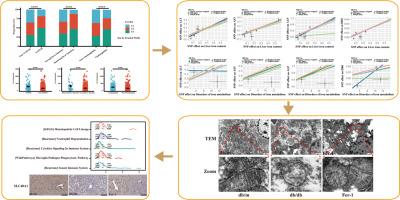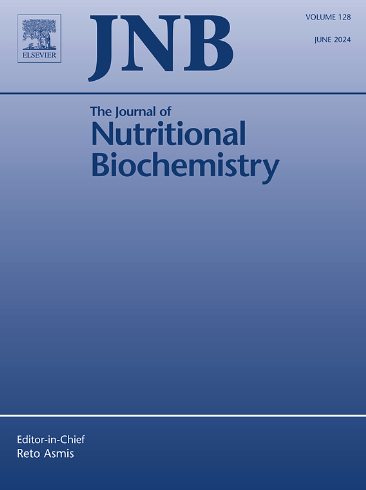Sculpting liver-related injury in type 2 diabetes mellitus: Decoding serum ferritin's correlation and ferroptosis pathways
IF 4.9
2区 医学
Q1 BIOCHEMISTRY & MOLECULAR BIOLOGY
引用次数: 0
Abstract
We aimed to assess whether serum ferritin levels are a risk factor for hepatic-related injury in patients with type 2 diabetes mellitus (T2DM) and investigate the role of ferroptosis in this pathological process. A retrospective cohort study and Mendelian randomization analysis were conducted to investigate the association between serum ferritin levels and liver-related outcomes. Furthermore, dB/dB mice and the GSE230674 dataset were used to analyze liver iron metabolism-related indicators and the ferroptosis pathway. Findings from this retrospective cohort study revealed that an elevated serum ferritin level is a relatively independent risk factor for liver-related injuries in patients with T2DM, including nonalcoholic fatty liver disease, hepatocellular injury, and cholestasis. Subgroup analysis suggested that this relationship was absent in patients with anemia. Mendelian randomization analysis indicated a causal relationship between increased hepatic iron storage and disruptions in iron metabolism, leading to elevated alanine aminotransferase, aspartate aminotransferase, alkaline phosphatase, and direct bilirubin levels. Furthermore, diabetic mice with concomitant nonalcoholic fatty liver disease exhibited hepatic iron overload and activation of ferroptosis pathways. After intervention with ferrostatin-1, there was a reduction in liver injury-related biomarkers and suppression of ferroptosis. Serum ferritin is a risk factor for liver-related injuries in patients with T2DM with normal hemoglobin levels. In this context, activation of the ferroptosis pathway due to hepatic iron overload may play a crucial role. In addition, treatment strategies focused on inhibiting the hepatic ferroptosis pathway are promising.

2型糖尿病肝脏相关损伤:解码血清铁蛋白相关性和铁下垂途径。
目的:我们旨在评估血清铁蛋白水平是否是2型糖尿病(T2DM)患者肝相关损伤的危险因素,并探讨铁下沉在这一病理过程中的作用。材料和方法:通过回顾性队列研究和孟德尔随机化分析来研究血清铁蛋白水平与肝脏相关结局之间的关系。此外,使用db/db小鼠和GSE230674数据集分析肝铁代谢相关指标和铁凋亡途径。结果:这项回顾性队列研究的结果显示,血清铁蛋白水平升高是T2DM患者肝脏相关损伤的一个相对独立的危险因素,包括非酒精性脂肪性肝病、肝细胞损伤和胆汁淤积症。亚组分析表明,这种关系在贫血患者中不存在。孟德尔随机分析表明,肝脏铁储存增加与铁代谢中断之间存在因果关系,导致谷丙转氨酶、天冬氨酸转氨酶、碱性磷酸酶和直接胆红素水平升高。此外,伴有非酒精性脂肪性肝病的糖尿病小鼠表现出肝铁超载和铁下垂途径的激活。在用铁他汀-1干预后,肝损伤相关生物标志物减少,铁下垂受到抑制。结论:血清铁蛋白是正常血红蛋白水平的T2DM患者肝相关损伤的危险因素。在这种情况下,由于肝铁超载导致的铁下垂途径的激活可能起关键作用。此外,专注于抑制肝铁下垂途径的治疗策略是有希望的。
本文章由计算机程序翻译,如有差异,请以英文原文为准。
求助全文
约1分钟内获得全文
求助全文
来源期刊

Journal of Nutritional Biochemistry
医学-生化与分子生物学
CiteScore
9.50
自引率
3.60%
发文量
237
审稿时长
68 days
期刊介绍:
Devoted to advancements in nutritional sciences, The Journal of Nutritional Biochemistry presents experimental nutrition research as it relates to: biochemistry, molecular biology, toxicology, or physiology.
Rigorous reviews by an international editorial board of distinguished scientists ensure publication of the most current and key research being conducted in nutrition at the cellular, animal and human level. In addition to its monthly features of critical reviews and research articles, The Journal of Nutritional Biochemistry also periodically publishes emerging issues, experimental methods, and other types of articles.
 求助内容:
求助内容: 应助结果提醒方式:
应助结果提醒方式:


